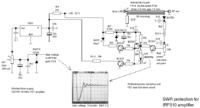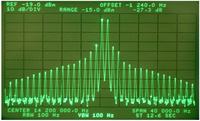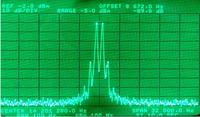No, it is not difficult at all. As you write the measurement system, it does not have to be strip-shaped, because it is large for that. I have no idea how to calculate this ratio of incident to reflected without prock .... With manual calibration, as in cheap reflectometers, it's cool, but the same must be done ... With prock, it is easy to calculate even a lot of ready-made items in the network ... We can have sad surprises with prock. Usually they sprinkle raisins all over the receiver. In my home made, I fought against it. Of course, it can be fought. From my radio I have 10W and in the lower bands around 80m almost 20W and to be honest it is impossible to hit. I have 3 dipoles and 2 deltas for it, it happened several times that I forgot to switch the fit to the end of course. I was surprised only when I felt the paint from the radio housing  For power transistors in the ends it is good to use mica spacers and ceramic sleeves because plastics melt and that's the end
For power transistors in the ends it is good to use mica spacers and ceramic sleeves because plastics melt and that's the end 








